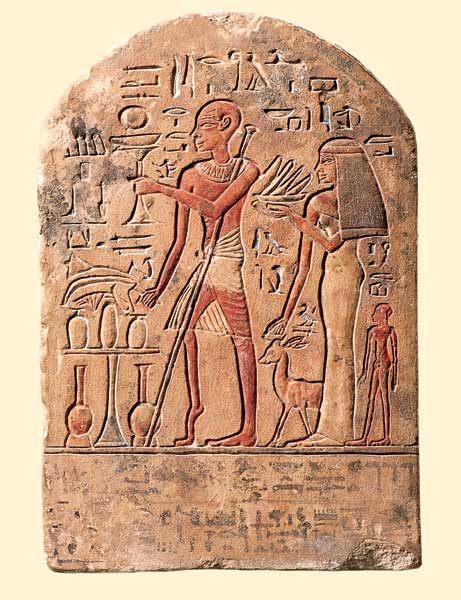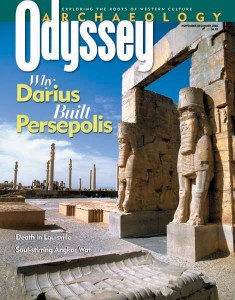Ancient Life: An Ancient Scourge
Polio in Pharaonic Egypt

This 14th-century B.C. portrait of Roma, an Egyptian doorkeeper, may be the earliest depiction of a victim of poliomyelitis.
Roma adeptly carries a goblet while supporting himself with a staff on the 11-inch-high limestone funerary stela from Saqqara, 10 miles south of Cairo. His withered right leg and deformed right foot are characteristic of polio infection.
Ancient Egyptian medical papyri list symptoms similar to those of polio, a viral infection of the central nervous system that paralyzes some muscle groups. Skeletal deformities typical of polio have also been detected in mummies. The mummy of the 19th Dynasty pharaoh Siptah (1194–1188 B.C.), for example, has a hoof-shaped foot and withered leg, much like Roma’s. As a youth, Siptah contracted a disease that left him with a wasted leg. His hoof-shaped foot resulted from years of walking on the shortened leg—suggesting that Siptah suffered from polio in childhood, before his leg bones reached maturity.
Roma’s disability didn’t prevent him from giving valuable service to his employer, the Lady Yaamia. The inscription on his funerary stela reveals the esteem with which he was held: “A boon which the pharaoh gives and which Astarte of Syria gives, the Lady of heaven, Lady of the two lands, mistress of gods, (consisting of) happiness and joy, and a beautiful burial in the western necropolis of Memphis for the ka of the doorkeeper Roma.”
Already a library member? Log in here.
Institution user? Log in with your IP address.

